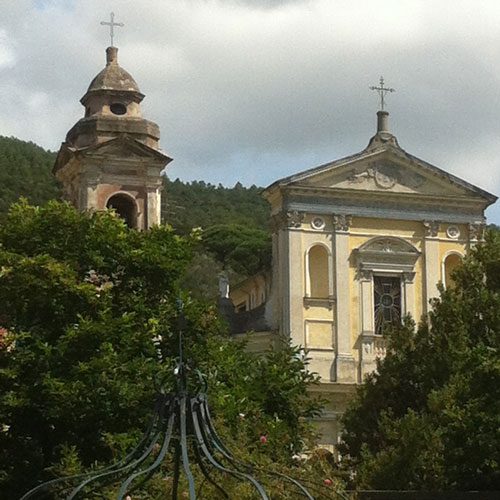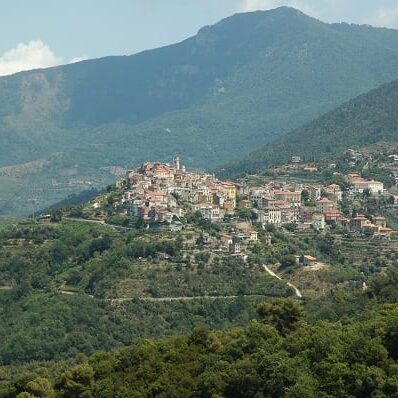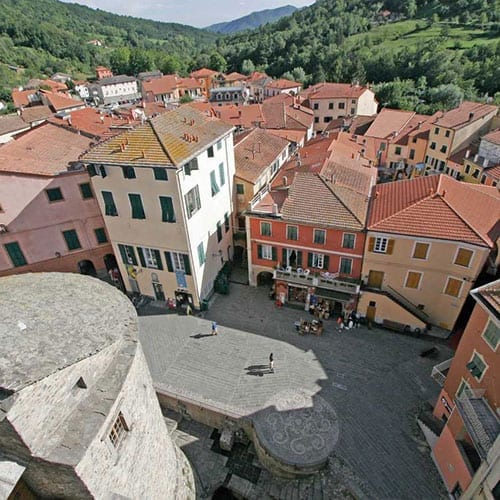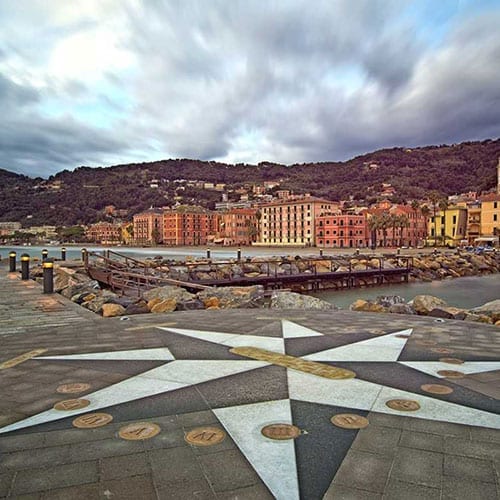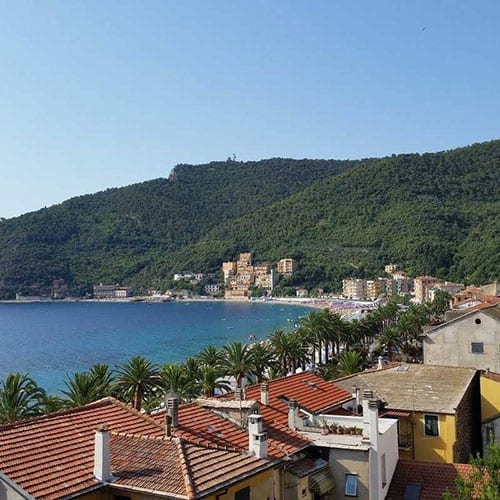 Cervo
Cervo
MUNICIPALITY OF CERVO
(Imperia District)
Altitude
mt. 67 a.s.l.
POPULATION
1215 (470 in the borgo)
TOURIST INFORMATION
IAT Office, c/o Clavesana Castle
Piazza Santa Caterina, 2 Ph. 0183 408197
infocervo@rivieradeifiori.travel
www.cervo.com | comunecervo@cervo.com
 Initially the Latin name of the borgo was Servo (meaning “offering services”); during the 16th century it was changed in Cervo.
Initially the Latin name of the borgo was Servo (meaning “offering services”); during the 16th century it was changed in Cervo.
You may start your visit from Porta Marina della Montà, which until the end of the 18th century marks the southern boundary of the castle walls. The Palazzo del Cinquecento above the low, narrow porticoes echoes the Genoese constructions of the time.
Going uphill, you’ll come to Palazzo Morchio, today it is the town hall, which belonged to Tommaso Morchio, admiral commander of ten Genoese galleys, who in 1371 conquered the Republic of Malta and the city of Mazara in Sicily. It dates back to the end of the 17th century, with a slate portal in Genoese style.
Entering the circle of walls and continuing uphill, turn right to leave the Via Romana. Proceeding, you meet the imposing walls that formed the stands of the castle in the fifteenth to sixteenth centuries. In the square opens the majestic and baroque church of St. John the Baptist, called “dei Corallini” because built with the proceeds of the fishing companies that practiced, fishing for coral in the seas of Corsica and Sardinia. In reality, the offers for the factory came from all the inhabitants – fishermen and sailors, shipowners, owners, oil merchants, craftsmen – who also helped to transport up here from the beach, on man’s shoulders, the works of art and precious marbles arrived by sea. The original concave façade of the temple dominates a large arm of sea with extraordinary scenic effect and in the evening its bell tower looks like a lighthouse that indicates the landing to sailors. The church was begun in 1686 and completed in 1734.
Another important building is the Castle (12th century) with three circular towers, it was built by the marquis of Clavesana and used as a private dwelling. During the 17th century it was divided in two parts, the lower part housed the hospital and nowadays it houses a museum.
The local product is the excellent Extra Virgin Olive Oil and other culinary products made with local olives. The local dishes are based on fish and sellfish.
Guarda tutti i video sulla pagina ufficiale Youtube de I Borghi più belli d’Italia.



